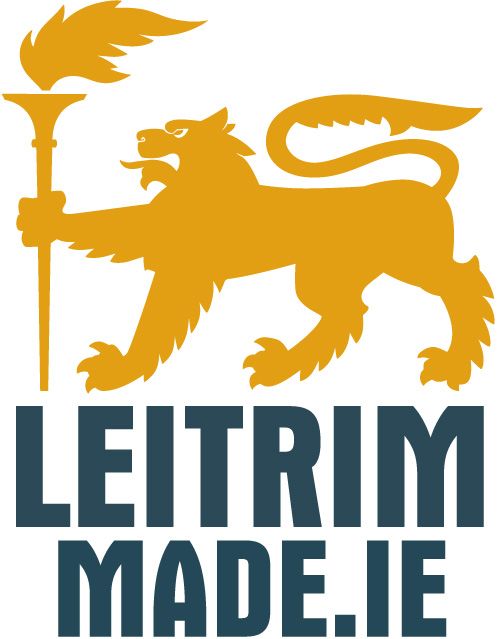Our 1979 Series III Land Rover had been a reliable workhorse, taking everything in stride—from towing our 535 Shetland cabin cruiser to countless summer trips to the bog, “saving” the turf that kept us warm through the winter months.
When we bought her in Blarney, County Cork back in 2018, she was painted all over in a faded red. The finish was rough, but that suited us fine—we had always planned to strip her back and give her a full respray. By 2020, though, she was looking worse for wear. Our on-and-off attempts at prepping her, panel by panel, had left her with a patchy, mismatched appearance—a multicoloured Land Rover, if we were being polite.
SERIES III
The Land Rover Series III went into production in September 1971 and would become the most numerous of the Series lineup (I, II, and III), with 440,000 units produced between 1971 and 1985. It brought with it a range of updates that set it apart from the outgoing Series IIA, including a silver plastic radiator grille, a distinctive three-cornered air intake on the passenger-side front wing, flat external door hinges, and standard black PVC upholstery.
The Series III retained the familiar 88-inch and 109-inch wheelbase options. Under the bonnet, it continued with the tried-and-tested engines from the Series IIA: the 2.25-litre four-cylinder petrol and diesel units, along with a 2.6-litre six-cylinder petrol engine available exclusively for the 109-inch models. From 1975, a Fairey Overdrive was offered as a dealer or DIY option to improve fuel efficiency, though it was never fitted as standard.
PAINT STRIPPING
Only being able to work on her at weekends meant the project was always going to take time, but it was clear the moment had come to take her off the road and do things right. We started with the right front wing, using generous amounts of Nitromors paint stripper. As the layers peeled away, we began to feel like automotive archaeologists—her military past slowly revealing itself.
Though we’d been told she had served in the RAF, the story beneath the paint suggested a broader service record. Under the red topcoat, we uncovered desert camouflage, then dark navy, and finally some panels in light green—each layer hinting at a different chapter in her life within the British armed forces. Most striking of all were several bullet holes in the passenger door, their calibre unknown.
A brilliant tip from expert car restorer Gerry Cashin proved invaluable: tightly wrapping each stripped panel in clingfilm to trap the paint stripper and accelerate its effect. It worked wonders, saving time and effort.
Once the paint was gone, the exposed aluminium bodywork was stunning—there was serious talk of leaving it bare and finishing it with a clear lacquer. In the end, though, practicality won out. We moved on to sanding, working through various grades of paper. Thankfully, the body was in good shape, needing very little filler—just enough to deal with the three bullet holes in the passenger door.
SPRAY PAINTING
Our own shed could barely accommodate the Series III—there was only about 4cm to spare—so while we had just enough space to strip the paint (mostly working outdoors), there was no way we could manage the spraying there. Thankfully, a generous neighbour offered the use of his larger shed, giving us the space we needed to do the job properly.
With room to work, we began with a coat of pale grey etch primer. That sparked yet another discussion about leaving the Land Rover in that colour—tempting, but maybe next time.
The paint came from Parts for Cars in Blanchardstown: BMW NATO Green for the body and a Land Rover-style cream for the roof. Carrick-on-Shannon Motor Factors supplied the activator to complete the mix.
Once we got the paint mix right, spraying became an enjoyable part of the process. It took some practice to get the hang of it, but once we found our rhythm, it was surprisingly relaxing. Over several weekends—and many hours spent running the kerosene space heater—we applied three coats. A friend who stopped by offered an honest, outside perspective and suggested one more coat for good measure, so on it went.
Although the Series III now looked finished, a bit of touching up was still needed. Martina, with her steady hand, handled the finer details across the panels. We also replaced all the door rubber surrounds. Anyone who’s worked on a Series Land Rover knows that while replacing the bulkhead air vent rubbers is straightforward, reassembling the closing mechanisms is another story—especially if you’ve got large hands. The parts are tiny and maddeningly fiddly, but once again, Martina’s smaller hands saved the day. The final touch was Gerry Cashin respraying the wheel rims in metallic bronze.
BACK AT WORK
With her fresh two-tone paintwork, she was looking sharp—but it wasn’t just for show. We soon had her back at work pulling out stubborn tree roots, and hard at it on the bog, hauling home the turf. That was nearly five years ago, and despite spending much of her time off-road, the paintwork is holding up remarkably well!
Check our some of our previous videos featuring our Series III:
If you have a story to share, please email Kevin Reid [email protected]
Sources of Information and Photo Credits:
Land Rover: 60 Years of the 4×4 Workhorse – James Taylor
The Complete Catalogue of the Land Rover – James Taylor
Our thanks to Shane McGann
Tech Specs
- Land Rover Series III Specifications:
- Body: 2-door
- 4-door
- Engine: 2.25 - 73 hp (54 kW)
- Transmission: 4-speed manual main transmission 2-speed manual transfer gearbox (with overdrive) selectable four-wheel drive
- Length: 142.4 in (3.617 mm)
- Width: 66.0 in (1.676 mm)
- Height: 77.5 in (1.968 mm)


